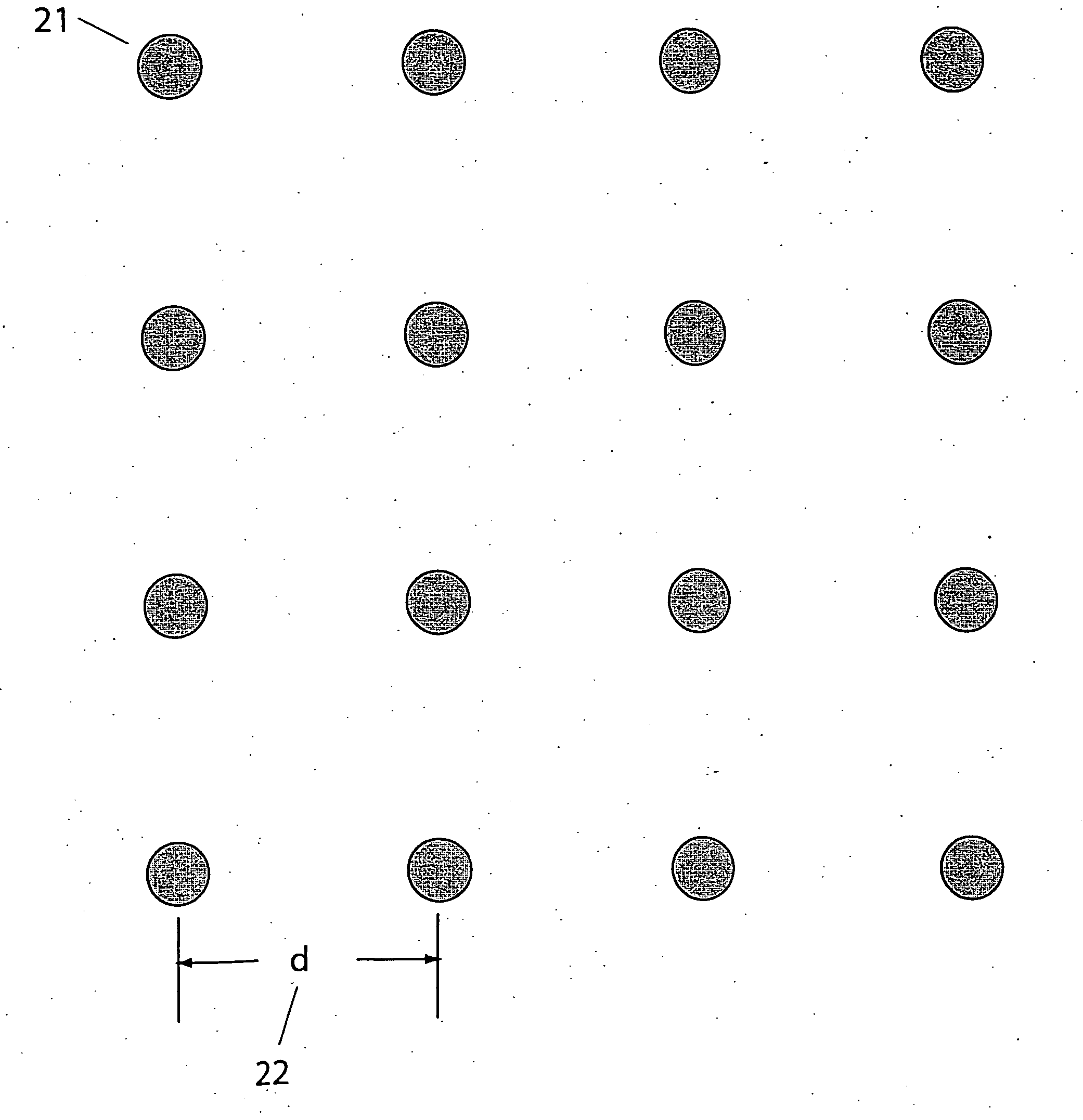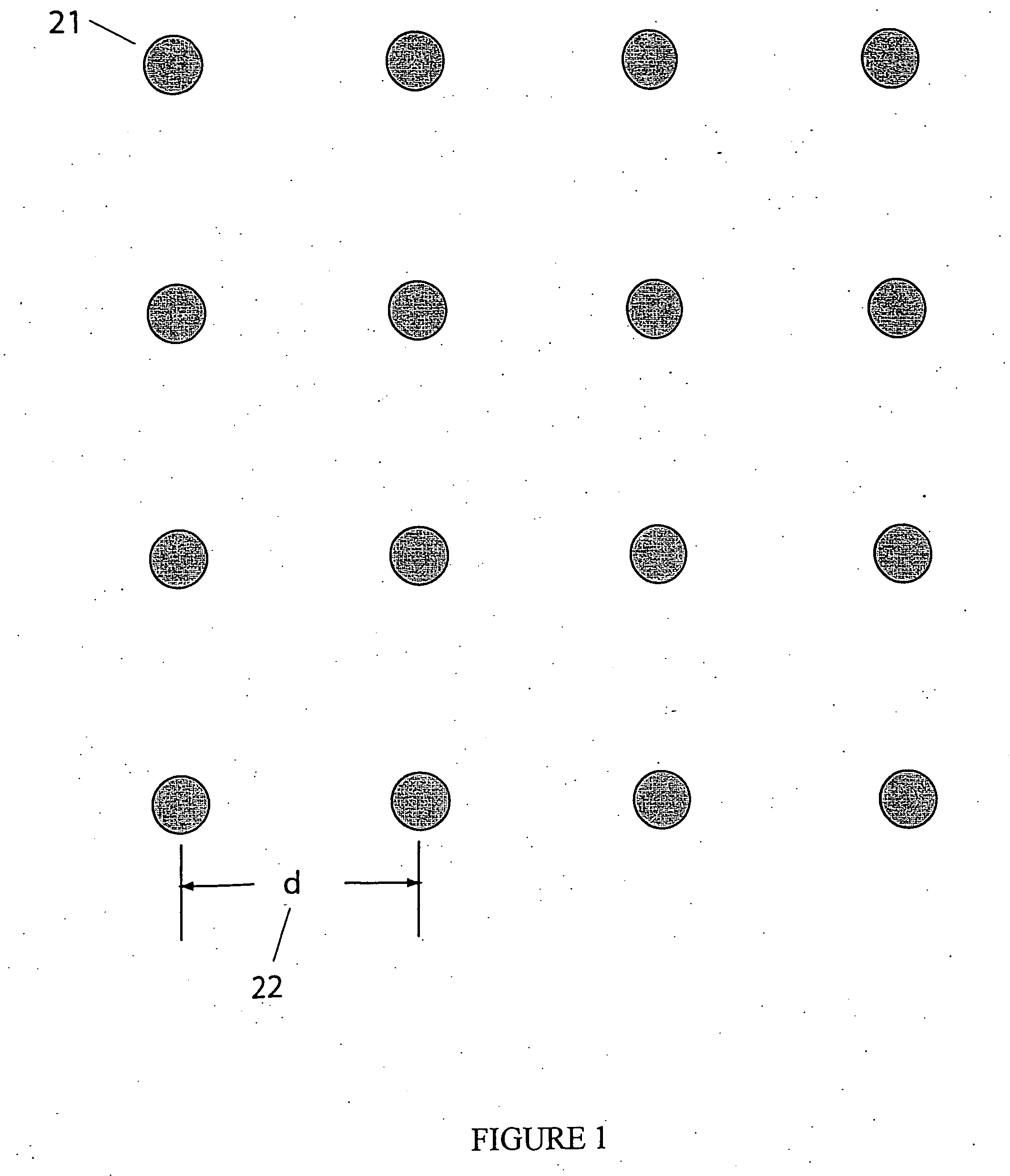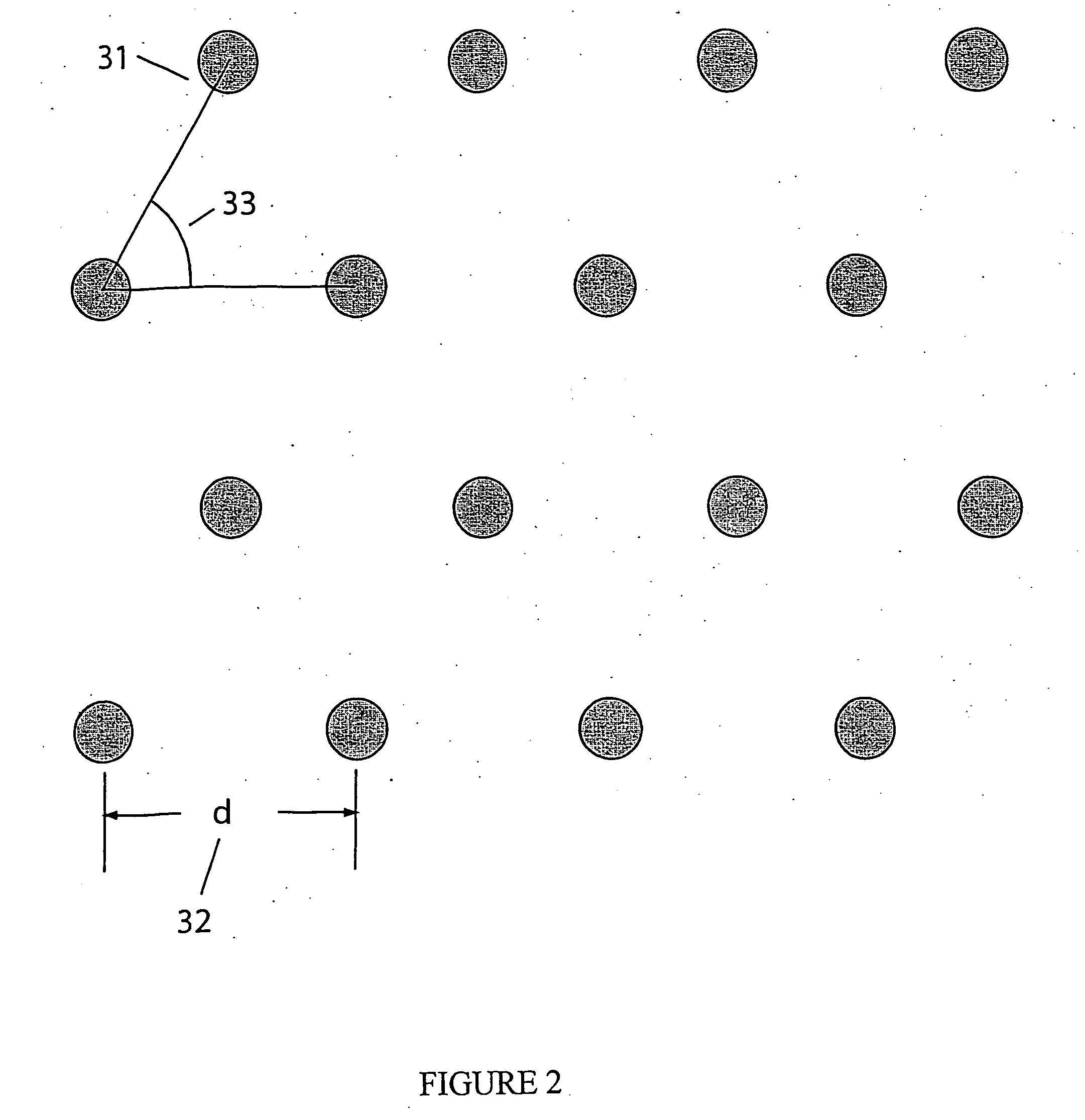Apparatus and methods for optical analysis of molecules
- Summary
- Abstract
- Description
- Claims
- Application Information
AI Technical Summary
Benefits of technology
Problems solved by technology
Method used
Image
Examples
example 1
[0083] The following provides an illustrative process of fabricating zero-mode waveguide. The parameters described herein are meant to be illustrative and not intended to be limiting in any manner. [0084] 1. Substrates: Substrates are double polished, 60 / 40 scratch / dig surface quality, Fused Silica wafers, cut to 100 millimeters(±0.2 mm) diameter, and 175 micrometer(±25 micrometers) thick and a total thickness variation of less than 25 micrometers. [0085] 2. Clean: A mix of 5 parts deionized water, 1 part of (30% v / v Hydrogen Peroxide in water), 1 part of (30% v / v Ammonium Hydroxide in water) is heated to 75 degree Celsius on a hotplate. The wafers are immersed in the mix using a Teflon holder for a duration of 15 minutes. [0086] 3. Rinsing: The holder containing the wafers is removed from the RCA clean bath and immersed in a bath of deionized water. The wafers are left in this second bath for a 2 minutes period. The holder still containing the wafers is removed from the bath, and s...
example 2
Monitoring Enzymatic Synthesis of a DNA Strand by a Single DNA Polymerase Molecule in Real Time
[0115] In these experiments we sought to track the enzymatic synthesis of a DNA strand by a single DNA polymerase molecule in real time using a fluorescently labeled nucleotide. We immobilized individual Phi29N62D DNA polymerase enzymes (Amersham Biosciences, Piscataway, N.J.) in zero-mode waveguides (ZMWs) by non-specific binding using a dilute enzyme solution. After immobilization, the ZMW structures were washed to remove unbound enzyme, and then exposed to a solution containing the reaction reagents. As for the DNA template, we used a 68-bp pre-primed circular DNA that contained two cytosine bases in characteristic, asymmetric spacing (FIG. 9A). Strand-displacement polymerizing enzymes such as Phi29 DNA polymerase will continuously loop around the circular template and thus generate a long and highly repetitive complementary DNA strand.
[0116] We used R110-dCTP (Amersham Biosciences, ...
PUM
| Property | Measurement | Unit |
|---|---|---|
| Density | aaaaa | aaaaa |
| Optical properties | aaaaa | aaaaa |
Abstract
Description
Claims
Application Information
 Login to View More
Login to View More - R&D
- Intellectual Property
- Life Sciences
- Materials
- Tech Scout
- Unparalleled Data Quality
- Higher Quality Content
- 60% Fewer Hallucinations
Browse by: Latest US Patents, China's latest patents, Technical Efficacy Thesaurus, Application Domain, Technology Topic, Popular Technical Reports.
© 2025 PatSnap. All rights reserved.Legal|Privacy policy|Modern Slavery Act Transparency Statement|Sitemap|About US| Contact US: help@patsnap.com



